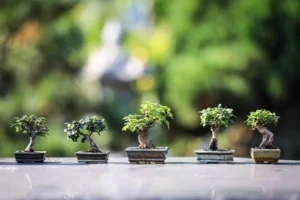Imagine growing fresh, vibrant herbs and vegetables right in your own home—without soil, messy gardening tools, or the need for a large backyard. That’s the beauty of hydroponics, a method of growing plants in nutrient-rich water instead of soil. This technique allows plants to absorb exactly what they need for optimal growth, leading to faster yields, less water consumption, and fewer pests compared to traditional gardening.
Now, take it a step further with a vertical hydroponic garden—a space-saving solution perfect for small apartments, patios, or anyone looking to maximize their growing potential. By stacking plants vertically, you can grow a variety of crops even in the tightest spaces while maintaining an efficient and sustainable system. Whether you’re a city dweller with limited outdoor space or simply someone eager to try an innovative gardening approach, a DIY vertical hydroponic garden is a game-changer.
In this guide, you’ll learn everything you need to build your own DIY vertical hydroponic garden from scratch. We’ll cover the materials you need, the step-by-step process to assemble the system, and essential tips for maintaining healthy plants. By the end, you’ll have a fully functional setup that allows you to grow fresh produce year-round, no matter where you live. Ready to dive into the world of hydroponics? Let’s get started.
Understanding Vertical Hydroponic Gardening
A vertical hydroponic garden is an innovative way to grow plants without soil while maximizing space. Unlike traditional gardening, where plants spread out in horizontal rows, a vertical system stacks plants upward, making it ideal for small spaces like balconies, patios, or even indoor setups. Instead of relying on soil for nutrients, plants are fed through a water-based solution rich in essential minerals, ensuring they receive exactly what they need to thrive.
One of the biggest advantages of vertical hydroponics is space efficiency. Since plants grow upwards instead of outwards, you can cultivate more crops in a fraction of the area required for a traditional garden. This makes it a perfect solution for urban dwellers or anyone looking to grow their own food in a limited space. Another major benefit is water conservation. Hydroponic systems use up to 90% less water than soil-based gardening because water is continuously recirculated rather than lost to the ground. Plus, because plants get their nutrients directly from the water, they tend to grow faster and produce higher yields, meaning you can enjoy fresh herbs, vegetables, and greens in a shorter time.
If you’re wondering what to grow, leafy greens like lettuce, spinach, and kale are some of the easiest plants to start with. Herbs such as basil, mint, and cilantro thrive in hydroponic setups, and even strawberries, cherry tomatoes, and peppers can be successfully grown with the right support. Whether you’re a beginner or an experienced gardener, a vertical hydroponic garden offers a simple, sustainable, and rewarding way to grow your own food.
Materials and Tools Needed
Before you start building your vertical hydroponic garden, you’ll need to gather a few essential materials. The good news is that most of these items are easy to find, and once you set up your system, maintenance is fairly simple.
The core components of your setup include PVC pipes or vertical towers, which serve as the structure for holding your plants. You’ll also need a water reservoir to store the nutrient-rich solution and a water pump to circulate it through the system. Net pots are used to hold your plants in place, allowing their roots to access the water and nutrients. Speaking of nutrients, a hydroponic nutrient solution is crucial for plant growth since there’s no soil to provide essential minerals. If you’re growing indoors or in a low-light area, consider adding grow lights to ensure your plants receive enough light for healthy development.
For those looking to make their system even more efficient, a few optional accessories can help. A timer for your water pump automates the irrigation cycle, preventing over- or under-watering. An air pump and air stones can help oxygenate the water, promoting stronger root growth. If you want to closely monitor your plants’ health, a pH and EC meter will help you track nutrient levels and water quality.
With these materials in hand, you’ll be ready to build a functional and productive vertical hydroponic garden that fits your space and needs. Next, we’ll walk through the step-by-step process of assembling your system and getting your plants growing.
Step-by-Step Guide to Building a DIY Vertical Hydroponic Garden
Building your own vertical hydroponic garden might seem like a big project, but breaking it down into manageable steps makes it easy—even for beginners. Follow this guide, and soon you’ll have a thriving, space-saving system producing fresh, homegrown plants.
Step 1: Planning and Designing Your System
Start by deciding where you’ll place your garden—indoors, on a balcony, or in a backyard. The location determines whether you’ll need grow lights and how much vertical space you can use. Next, choose your system design. Will you build a PVC pipe tower, stacked trays, or a pre-made hydroponic stand? Sketch a layout that includes space for plants, water flow, and drainage. Make sure you can easily access the reservoir and pump for maintenance.
Step 2: Assembling the Structure
Once you have a design, gather materials. PVC pipes, wooden racks, or vertical planters work well for holding plants. If using PVC, drill evenly spaced holes for the net pots that will hold your plants. Secure the frame so it’s stable and won’t tip over. If growing indoors, use waterproof trays to catch any leaks.
Step 3: Installing the Water Circulation System
The water system keeps plants hydrated and nourished. Place a large water reservoir (a plastic bin or bucket) at the base. Connect a submersible water pump to tubing that carries the nutrient-rich solution up through the system. Make sure excess water can drain back into the reservoir, creating a continuous cycle.
Step 4: Setting Up the Growing Medium and Plants
Instead of soil, hydroponic plants need a soilless growing medium like clay pebbles, rock wool, or coco coir. These materials provide stability while allowing roots to absorb nutrients efficiently. Place seedlings or plant cuttings into net pots, then fit them into the holes of your vertical structure.
Step 5: Adding Nutrient Solution and Monitoring pH Levels
Mix a hydroponic nutrient solution following the instructions on the package. Common nutrients include nitrogen, phosphorus, and potassium, plus micronutrients like calcium and magnesium. Pour the solution into the reservoir and use a pH meter to check the water’s pH level, which should stay between 5.5 and 6.5 for optimal plant absorption.
Step 6: Installing Grow Lights (if necessary)
If you’re growing indoors or in a low-light area, install LED grow lights. Position them 12-18 inches above the plants and adjust as they grow. Full-spectrum LED lights are best, as they mimic natural sunlight. Set a timer for 12–16 hours of light daily to ensure healthy growth.
Maintenance and Troubleshooting
Keeping your vertical hydroponic garden in top shape doesn’t require a lot of work, but regular maintenance is key to healthy plants and a thriving system. A little attention to water quality, nutrient balance, and system cleanliness will help you avoid common issues and keep your plants producing at their best.
How to Maintain Water Quality and Nutrient Balance
Since your plants rely entirely on the water for nutrients, keeping it clean and well-balanced is essential. Check water levels daily and top off the reservoir as needed to prevent pumps from running dry. Every one to two weeks, replace the nutrient solution entirely to prevent buildup of salts and minerals that could harm plant roots.
Monitoring pH levels is just as important. The ideal pH range for most hydroponic plants is 5.5 to 6.5. If the pH drifts too high or too low, plants won’t absorb nutrients properly, leading to deficiencies. Use a pH meter to test regularly and adjust with pH up or down solutions as needed.
Common Issues and How to Fix Them
- Clogged Pipes or Pump – Mineral deposits, plant roots, or algae can block water flow. Regularly check for obstructions and flush the system with clean water if needed.
- Algae Growth – Exposure to light can cause algae to develop in the reservoir or tubing. Cover your water tank, use opaque pipes, and clean any algae buildup with a diluted hydrogen peroxide solution.
- Plant Diseases or Root Rot – Poor oxygenation or stagnant water can cause root rot. Ensure good water circulation, avoid overwatering, and use an air pump with air stones to keep roots oxygenated.
Tips for Maximizing Plant Health and Yield
To get the best results, ensure your plants receive enough light, proper spacing, and the right nutrient mix. Prune regularly to remove dead leaves and encourage new growth. If growing indoors, rotate plants occasionally to ensure even exposure to light.
Conclusion
Building your own DIY vertical hydroponic garden is an incredibly rewarding project. Not only does it allow you to grow fresh, healthy produce at home, but it also maximizes limited space, conserves water, and speeds up plant growth. Whether you’re in an apartment or just want a more efficient way to garden, vertical hydroponics offers a sustainable solution that anyone can try.
The beauty of hydroponics is the flexibility it offers. You can experiment with different plants, from leafy greens and herbs to tomatoes and strawberries. With a little creativity, you can adjust the setup to fit your space, needs, and preferences. Don’t be afraid to try new things—hydroponic gardening is all about trial and error, and there’s always something new to learn.
Now that you have the tools and knowledge to get started, why not take the plunge and create your own system? There’s no better time to try out this innovative way of gardening. As you go through the process, we’d love to hear about your experiences. Feel free to share your tips, successes, and challenges in the comments, or ask any questions you may have. Happy gardening, and good luck on your hydroponic journey!




